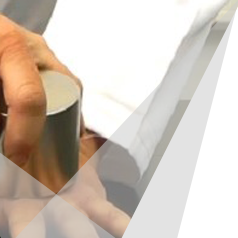Ferrite magnets are also known as ceramic magnets are amongst the most popular for everyday applications due to their low production cost, and their resistance to heat and corrosion.
The various applications that use ferrite magnets will amaze you, so read on to discover four interesting facts about ferrite magnets.
Why Are They Called Ceramic Magnets?
Ferrite magnets are also commonly known as ceramic magnets due to the similarities in their manufacturing processes. An important part of the manufacturing process is exposing the magnetic material to exceptionally high heat.
When making a ferrite magnet, this process is referred to as ‘sintering’. In this step, the magnetic material is exposed to temperatures of approximately 1093°C.
It All Began in Tokyo…
Back in 1930 Yogoro Kato and Takeshi Takei of the Tokyo Institute of Technology discovered the very first ferrite compounds and just five years after this initial discovery, the TDK Corporation was founded to manufacture the newly discovered material.
Ferrite Magnets Are Used in Several Applications
Permanent ferrite magnets are commonly used when more powerful rare-earth neodymium magnets are not required or where a ferrite magnet’s resistance to demagnetisation, corrosion, and ability to operate at high temperatures is required.
Common applications of ferrite magnets include:
- Fridge magnets
- Loudspeakers
- Security Systems
- Pot Magnets
- Eddy Current Devices
- Motors, Generators, and Alternators
- Brakes
- Clamps
- Sweeper Magnets
- Switches
There Are Two Types of Ferrite Magnets
Although ferrite magnets have two common names it’s actually true that there are two different types of ferrite magnets. The first type of ferrite magnet is barium ferrite, which was the first type of ferrite magnet to be discovered.
The second type is strontium ferrite, which was developed after barium ferrite and is today the most common type of ferrite magnet due to having better properties and performance.


